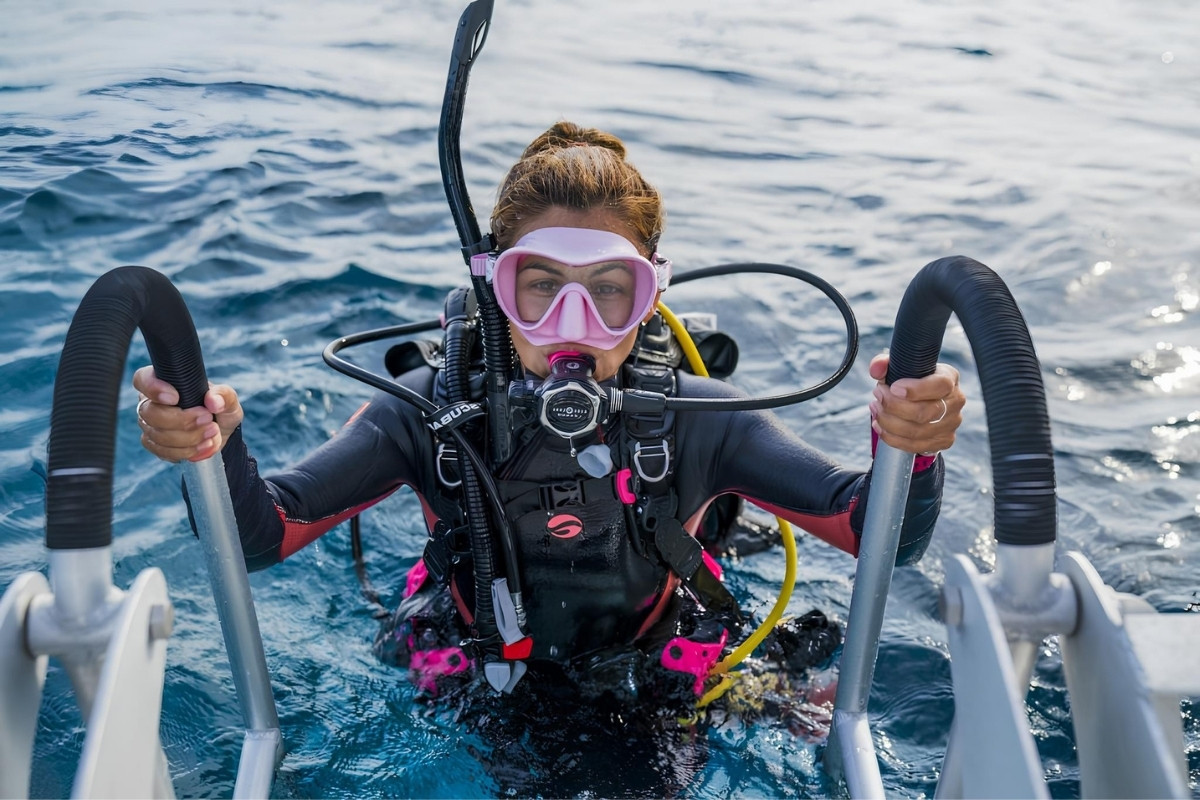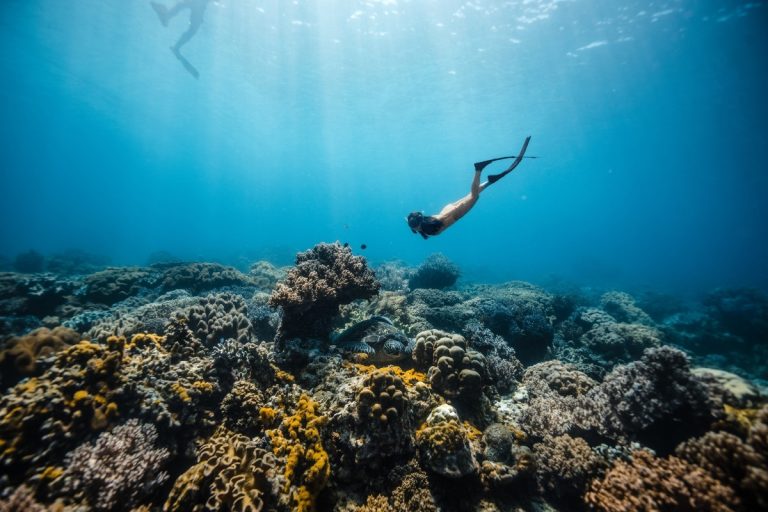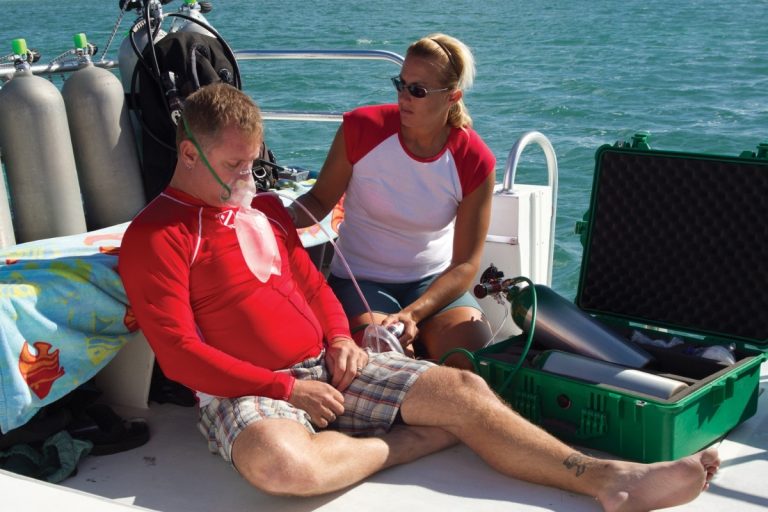Planning a scuba diving trip involves more than just booking flights and accommodations. The gear you bring can make or break your underwater experience, and proper preparation ensures you’re ready for whatever the ocean throws your way. Whether you’re heading to tropical reefs or temperate waters, having the right items packed efficiently will help you focus on what matters most: enjoying incredible underwater encounters.
Essential Items for Divers
Getting your fundamental diving equipment right forms the foundation of any successful trip. Your personal gear not only ensures comfort and proper fit but also provides the reliability you need when exploring underwater environments. Many experienced divers prefer bringing their own equipment rather than relying on rental gear, especially for items that directly impact safety and comfort.
Certification and Membership Cards
Your diving credentials serve as your passport to underwater adventures. Always pack your certification cards from recognized organizations like PADI, NAUI, or SSI, along with any specialty certifications you’ve earned. These small plastic cards prove your training level and determine which dive sites you can access. Keep both physical cards and digital copies stored securely on your phone or in cloud storage. Some dive operators also offer discounts for members of diving organizations, so bring those membership cards too. Consider laminating important cards or keeping them in waterproof holders to prevent damage from moisture or saltwater exposure.
Diving Gear: BCD, Fins, Mask, Regulator
Your primary diving equipment deserves careful consideration and proper packing. A well-fitting mask creates the seal necessary for clear underwater vision, while fins that match your foot size and diving style improve efficiency and reduce fatigue. Your regulator system literally provides your lifeline underwater, making it crucial to bring your own if possible. BCDs (buoyancy control devices) should fit snugly and function reliably, as proper buoyancy control enhances both safety and enjoyment. Pack these items in protective cases or padded bags to prevent damage during transport. Always test your regulator before travel and consider bringing backup parts like O-rings and basic tools for minor adjustments.
Safety Equipment Overview
Safety equipment goes beyond your basic diving gear to include items that could save your life in emergency situations. Following proper health and safety tips for divers means carrying essential safety tools on every dive trip. A surface marker buoy helps boats spot you during ascents, while a whistle provides an audible signal if you surface away from your dive boat. Dive lights serve dual purposes: illuminating dark spaces during daytime dives and providing emergency signaling capabilities. Pack at least two reliable lights with fresh batteries, and consider bringing a backup light source. A cutting tool helps you escape from fishing lines or nets, while a delayed surface marker buoy allows you to signal your location to surface support during safety stops.
Personal Items: Snacks and Sunscreen
Diving burns calories and exposes you to intense sun reflection off water surfaces. Pack high-energy snacks that won’t spoil in warm climates, such as nuts, energy bars, or dried fruits. These provide quick energy between dives and help maintain blood sugar levels during long dive days. Sunscreen becomes critical when spending hours on boats with limited shade. Choose reef-safe formulations that won’t harm marine ecosystems, and apply generously to all exposed skin. Don’t forget often-missed areas like the tops of feet, back of hands, and behind ears. Lip balm with SPF protection prevents painful sunburned lips, while a wide-brimmed hat provides additional protection during surface intervals.
Optional Specialized Equipment
Advanced divers often want to bring specialized equipment that enhances their underwater experience or serves specific purposes. While these items aren’t essential for basic diving, they can significantly improve your trip depending on your interests and the dive sites you plan to visit.
Underwater Cameras
Capturing underwater memories requires specialized photography equipment designed to withstand pressure and saltwater exposure. Underwater cameras range from simple point-and-shoot models in waterproof housings to professional DSLR systems with multiple strobes and macro lenses. Consider your skill level and trip goals when choosing camera equipment. Beginners might prefer compact cameras with built-in flash, while experienced photographers may want full manual control and interchangeable lenses. Pack extra batteries, memory cards, and lens cleaning supplies. Silica gel packets help prevent fogging inside camera housings, and a sturdy carrying case protects expensive equipment during transport.
DPVs (Diver Propulsion Vehicles)
Diver propulsion vehicles, also known as underwater scooters, extend your range and reduce air consumption during longer dives. These battery-powered devices pull you through the water, allowing you to cover more distance with less effort. Consider the logistics of traveling with DPVs, as airlines have specific regulations regarding lithium batteries and electronic devices. Some dive destinations offer DPV rentals, which might be more practical than bringing your own. If you do pack a DPV, ensure batteries are properly installed or removed according to airline requirements, and bring charging equipment compatible with local electrical systems.
Rebreathers and Spearguns
Technical divers using rebreathers need additional preparation and specialized packing considerations. Rebreather systems require absorbent materials, oxygen sensors, and backup equipment that must be carefully transported to maintain functionality. Check airline regulations regarding compressed gas components and electronic systems. Spearguns for underwater hunting require research into local laws and regulations, as many destinations prohibit spearfishing or require special permits. Some locations restrict certain types of spearguns or limit hunting to specific areas and seasons. Always verify local regulations before packing hunting equipment, and consider shipping gear separately if airline restrictions apply.
Other Accessories
Specialized accessories can enhance comfort and functionality during your diving adventures. Dive computers provide crucial information about depth, time, and decompression requirements, making them valuable safety tools for serious divers. Underwater slates allow communication with dive buddies and recording of observations. Mesh bags help collect marine debris or interesting finds (where permitted). Dive boots protect feet when entering water from rocky shores, while gloves provide hand protection in cooler waters or around sharp coral. Consider bringing backup masks, as a broken or lost mask can end your diving activities. Small repair kits with silicone sealant, zip ties, and basic tools help fix minor equipment issues on location.
First Aid and Medication
Medical preparedness becomes especially important when diving in remote locations where professional medical care might be hours away. A well-stocked first aid kit and essential medications can address common diving-related issues and general health problems that arise during travel.
Comprehensive First-Aid Kit
Your diving first aid kit should address both general injuries and diving-specific medical issues. Include basic wound care supplies like adhesive bandages, gauze pads, medical tape, and antiseptic wipes for treating cuts and scrapes from coral or marine life. Pain relievers like ibuprofen help with headaches, muscle soreness, and minor injuries. Antihistamines address allergic reactions to marine life stings or bites. Include seasickness medication, as boat trips to dive sites can trigger motion sickness even in experienced travelers. Pack thermometer strips to monitor body temperature, and include instant cold packs for treating sprains or reducing swelling. Emergency contact information and medical history cards provide crucial information if serious medical attention becomes necessary.
Medication Essentials
Personal medications require special attention during dive travel planning. Bring enough prescription medications to last your entire trip plus several extra days in case of travel delays. Keep medications in original containers with clear labels to avoid customs issues. Pack a complete list of medications, dosages, and prescribing doctors in case you need medical attention abroad. Some medications affect diving safety, so consult with a dive medicine specialist if you take regular prescriptions. Over-the-counter medications like decongestants, antacids, and pain relievers address common travel-related discomfort. Consider bringing antibiotics for treating ear infections, which can develop after repeated exposure to water during diving activities.
Emergency Preparation Tips
Emergency preparedness goes beyond packing medical supplies to include planning and communication strategies. Research medical facilities at your destination and identify the nearest hyperbaric chamber in case of decompression sickness. Save emergency contact numbers in your phone and write them down separately. Consider purchasing dive accident insurance that covers hyperbaric treatment and medical evacuation, as standard travel insurance often excludes diving-related injuries. Pack emergency signaling devices like personal locator beacons for remote diving locations. Share your diving plans with someone at home, including dive sites, boat operators, and expected return dates. Emergency cash in local currency helps if you need immediate medical attention or transportation.
Packing for Different Destinations
Different diving destinations present unique challenges and requirements that affect your packing decisions. Understanding local conditions, cultural expectations, and logistical considerations helps you prepare appropriately for your specific trip.
Understanding Destination-Specific Needs
Research your destination thoroughly to understand what gear and supplies you’ll need. Tropical destinations might require reef-safe sunscreen and lightweight exposure suits, while temperate waters demand thick wetsuits and warm layers for surface intervals. Some locations have excellent dive shops with quality rental gear, making it practical to pack light and rent locally. Other remote destinations might have limited equipment availability, requiring you to bring everything you need. Consider local customs and dress codes, especially in conservative cultures where modest clothing is expected outside of diving activities. Research the best seasonal destinations for diving to ensure optimal conditions during your visit, as weather patterns significantly impact diving quality and safety.
Weather Considerations
Weather patterns at your destination influence both diving conditions and packing requirements. Tropical locations during rainy seasons might require waterproof bags and quick-dry clothing for staying comfortable between dives. Cold water destinations need warm layers, waterproof outer shells, and insulated boots for boat travel. Wind patterns affect boat operations and surface conditions, potentially requiring seasickness medication and secure storage for loose items. Check seasonal weather patterns and pack accordingly, including backup plans for equipment that might get wet during transport. UV exposure increases significantly in tropical locations and at altitude, requiring stronger sun protection and protective clothing.
Luggage Weight Restrictions
Airline weight restrictions pose significant challenges for divers carrying heavy gear. Research baggage allowances for your specific airline and route, as international flights often have different restrictions than domestic travel. Consider shipping heavy items like weights or tanks to your destination if rental options aren’t available. Pack dense items like regulators and dive computers in carry-on luggage to reduce checked bag weight and protect valuable equipment. Distribute weight between multiple bags if traveling with companions, and consider paying for additional baggage allowance if necessary. Some airlines offer special allowances for sports equipment, which might include diving gear.
Organizing Your Packing
Efficient packing organization reduces stress, prevents forgotten items, and helps you find what you need quickly during your trip. A systematic approach to packing ensures you’re prepared for various scenarios while maximizing luggage space.
Creating a Packing Checklist
Develop a comprehensive packing checklist tailored to your specific trip and diving activities. Start with essential items like certification cards, passport, and critical gear, then add destination-specific requirements. Organize your list by categories such as diving gear, clothing, electronics, and personal items. Check off items as you pack them to avoid forgetting important equipment. Save successful packing lists for future trips, modifying them based on lessons learned from previous adventures. Share your checklist with travel companions to coordinate shared items and avoid duplicate packing. Digital checklists on your phone allow easy updating and sharing, while printed copies serve as backups.
Efficient Item Organization
Pack similar items together in clearly labeled bags or packing cubes to stay organized throughout your trip. Use mesh bags for wet gear that needs to dry, and waterproof bags for electronics and important documents. Roll clothing instead of folding to save space and reduce wrinkles. Pack heavy items at the bottom of suitcases and distribute weight evenly. Use empty spaces inside larger items to pack smaller accessories. Bring extra ziplock bags for separating dirty laundry, storing wet swimwear, and organizing small items like batteries and memory cards. Pack a small day bag for shore excursions and carrying essentials during travel days.
Carry-On Essentials
Your carry-on bag should contain items essential for your first day of diving in case checked luggage gets delayed. Pack at least one complete diving outfit, including mask, fins, and wetsuit if possible. Include medications, important documents, and valuable electronics that shouldn’t be checked. Bring a change of clothes and basic toiletries to stay comfortable during travel delays. Pack entertainment for long flights and layovers, along with phone chargers and portable batteries. Include snacks and an empty water bottle to fill after security checkpoints. Keep emergency cash and copies of important documents in your carry-on for security.
Travel Documents and Important Items
Proper documentation ensures smooth travel and legal diving activities at your destination. Missing or incorrect documents can prevent you from diving or even entering certain countries.
Required Travel Documents
Your passport must be valid for at least six months beyond your planned return date for most international destinations. Check visa requirements well in advance, as some countries require applications weeks or months before travel. Bring multiple copies of your passport, stored separately from the original document. Some destinations require proof of onward travel or return tickets before granting entry. Travel insurance documentation should be easily accessible, especially policies covering diving activities and medical evacuation. Keep digital copies of all important documents stored securely in cloud storage and accessible offline on your mobile device.
Keeping Important Items Secure
Protect valuable documents and items using multiple security strategies. Use hotel safes for storing passports, extra cash, and backup credit cards when not needed for daily activities. Consider wearing a money belt or hidden pouch for carrying cash and cards during excursions. Take photos of important documents and store them separately from originals. Leave detailed itineraries and copies of important documents with trusted contacts at home. Use luggage locks and keep valuables in carry-on bags during flights. Consider travel document organizers that keep everything in one secure, easily accessible location.
Travel Insurance Considerations
Standard travel insurance often excludes coverage for diving activities, making specialized dive insurance essential for serious divers. Research policies that cover diving accidents, equipment loss, and trip cancellations due to weather or medical issues. Some dive insurance policies include coverage for hyperbaric chamber treatment and medical evacuation, which can cost tens of thousands of dollars. Read policy exclusions carefully, as some insurers limit coverage based on certification levels or diving depths. Consider annual policies if you take multiple dive trips per year, as they often provide better value than single-trip coverage.
Budgeting for Your Dive Trip
Financial planning helps you enjoy your diving adventure without overspending or running short of funds for essential expenses. Understanding costs upfront allows you to make informed decisions about gear, activities, and accommodations.
Planning Your Budget
Create a detailed budget that includes all diving-related expenses such as boat trips, equipment rentals, and certification courses. Factor in meals, transportation, and accommodation costs, which can vary significantly between destinations. Include buffer amounts for unexpected expenses like equipment repairs, medical needs, or weather-related changes to diving plans. Research local prices for common items like sunscreen, snacks, and basic gear to avoid overpaying at tourist-focused shops. Consider seasonal price variations, as diving costs often increase during peak tourist seasons. When exploring budget-friendly dive vacations, look for package deals that include accommodation, diving, and meals for better overall value.
Cost-Saving Tips
Several strategies can reduce diving trip expenses without compromising safety or enjoyment. Book dive packages in advance for better rates, and look for deals that include multiple dives or extended stays. Consider staying at dive-focused accommodations that offer equipment storage, gear washing facilities, and direct access to dive operators. Share accommodation and transportation costs with other divers when possible. Pack your own snacks and drinks for boat trips instead of purchasing expensive refreshments on board. Look for destinations during shoulder seasons when prices are lower but conditions remain good for diving.
Affordable Gear Options
You don’t need the most expensive equipment to enjoy safe, comfortable diving. Focus your gear budget on items that most affect safety and comfort, such as a well-fitting mask and reliable regulator. Consider buying quality used gear from reputable dealers or other divers. Rent specialized equipment like underwater cameras or technical diving gear instead of purchasing items you’ll use infrequently. Look for package deals when buying multiple items from dive shops. Join diving forums and communities where members often sell quality used equipment at reasonable prices. Prioritize versatile gear that works in multiple environments over highly specialized items.
Dive Trip Planning Best Practices
Successful dive trips result from careful planning that considers your diving goals, budget, and preferred travel style. Making informed decisions about trip structure and logistics enhances your underwater experiences while minimizing potential problems.
Choosing Between Liveaboard and Day Trips
Your choice between liveaboard and day trip diving significantly impacts your packing needs and overall experience. When weighing liveaboard vs. day trip considerations, think about your diving goals and comfort preferences. Liveaboards offer access to remote dive sites and multiple dives per day but require efficient packing due to limited cabin space. Day trips provide more flexibility and easier access to varied accommodations but might limit you to sites within boat range of shore. Liveaboards typically include all meals and diving equipment, reducing your packing requirements but limiting food choices. Day trips allow you to experience local restaurants and cultural activities but require more planning for meals and transportation.
Understanding Dive Packages
Dive packages vary widely in what they include and exclude, affecting your packing and budgeting decisions. Some packages include all equipment, while others provide only basic gear like tanks and weights. Understand exactly what’s provided before deciding what to pack or purchase locally. All-inclusive packages might include meals, accommodation, and diving but could limit your flexibility to explore independently. Pay attention to dive site selections included in packages, as some operators focus on beginner sites while others cater to advanced divers. Consider package cancellation policies, especially during seasons when weather might affect diving conditions.
Pre-Trip Research and Organization
Thorough research prevents surprises and helps you pack appropriately for your specific diving adventure. Study the marine life you’re likely to encounter and bring appropriate identification guides or apps. Research local diving conditions, including typical visibility, currents, and water temperatures throughout your visit. Contact dive operators before arrival to confirm equipment availability and discuss any special requirements or certifications needed for planned dive sites. Join online forums or social media groups focused on your destination to get current information from recent visitors. Create backup plans for days when weather prevents diving, including alternative activities and indoor attractions.
Frequently Asked Questions
What essential items should I pack for scuba diving?
Essential items include your certification and membership cards, diving gear like BCD, fins, mask, and regulator, as well as safety equipment like surface marker buoys and dive lights.
How do I prepare for different diving destinations?
Research your destination to understand the specific gear and supplies required, including considerations for weather, cultural norms, and local customs.
What should I include in my first aid kit for diving trips?
Your first aid kit should include basic wound care supplies, seasickness medication, pain relievers, and any personal medications necessary for your trip.
How can I save money on my diving trip?
Consider booking dive packages in advance, sharing accommodation costs, packing your own snacks, and looking for deals on equipment rentals.
What are the differences between liveaboard and day trip diving?
Liveaboards provide access to remote dive sites and include meals and equipment, while day trips offer more flexibility and local experiences but may require more planning.
Maximizing Your Underwater Adventure
By following this packing guide and considering the various aspects of dive trip preparation, you can ensure a seamless and enjoyable scuba diving experience. Proper organization, understanding your destination’s unique requirements, and being financially prepared will allow you to focus on what truly matters: exploring the wonders of the underwater world.






